65. MT RUSHMORE, CUSTER PARK, BADLANDS, SOUTH DAKOTA, GARNET, MONTANA & BUFFALO, WYOMING
- Des & Sandie Nichols
- Aug 22, 2022
- 5 min read
Updated: Jun 24, 2024

The value of America's true riches does not lie in its Croesus wealth or its giant global corporations. It isn't just about how much money people have in the bank or how many homes they own. In truth, its extraordinary prosperity lies in its natural opulence, the many geographical and wildlife wonders, its bounty of protected National Parks and the way that the Americans so treasure, embrace and enjoy them.
American life at its best is, and always has been, an outdoor life.
Let's be honest, modern life in the US can be woefully short on civility and high on speed and self-interest. You witness this on the road every day where it is every man for himself with a complete lack of the courteous 'after you' manners that the British perform to a point of abject apology. That is until you meet the same people camping, hiking or just meandering in their cars through places like Yellowstone and Yosemite. Suddenly, the mood changes and everyone calms down to a point of actually bonding with their environment and acknowledging their fellow nature lovers, often greeting them like friends.
So it is a sheer delight to arrive at a relatively unsung corner of America where people live their country lives in this enlightened, tolerant state. The Black Hills of South Dakota are a must-visit, having an abundance of serene, tranquil landscapes with some veritable treasures for the traveler to discover. First and foremost are the four Presidential heads, hewn majestically from a rocky mountainside, that have put Mt Rushmore firmly into the top ten of many bucket lists, including ours. There are just a few monuments in the world that survive being massively over-hyped: the Taj Mahal in Agra, the Pyramids in Cairo, the Acropolis in Athens, the Blue Mosque in Istanbul, the Houses of Parliament in London, the Colosseum in Rome, the Forbidden City in Beijing, Ankor Wat in Cambodia - they all never fail to exceed lofty expectations. And now we can add another - the magnificent carvings on the hills of Mt Rushmore. As you drive up from the charming western town of Custer, you are directed towards the car parks. Incongruously, there is a multi-story car park to accommodate the tourists' cars, but it is well camouflaged, and the walkway towards the viewing area is cleverly designed to hide the carved icons from early prying eyes. You walk through a wide avenue of State flags before you are presented with the reveal... the 60ft faces of the four revered presidents - (l to r) George Washington, Thomas Jefferson, Theodore Roosevelt and Abraham Lincoln. They look imperious as they gaze out over the Black Hills and the sheer scale makes you pause to take in the theatrical glory of the imposing scene.


The master carver, Gutzon Borglum, took 14 years to complete his masterpiece, from 1927 to 1941, assisted by hundreds of tireless miners, sculptors and rock-climbers. It is a superb piece of detailed art. Even the irises in the eyes were sculpted as holes with a cube of granite left in each to give the subjects that eery realism.
But it is typical of this fascinating country that an even more mysterious discovery lies just round the corner, 10 miles down the road. The Native American Indians felt that they too should carve their own hero and in 1948 Chief Standing Bear commissioned Korczak Ziolkowski, a respected New York sculptor (Henry Standing Bear had earlier approached Borglum but was turned down) to go to work creating an even bigger statue (with an 87ft high face) of Chief Crazy Horse, who fought at the Battle of Little Big Horn. No-one actually knows what Crazy Horse looked like which no doubt made the design easier. Seventy-one years later, the face is almost finished but the design of the great chief, astride his stallion, and pointing out over his lands, still has decades to go. But they are still chipping away, under the watchful eye of Korczak's widow until her death in 2014 and now under the stewardship of her children. The eventually finished statue will be 563ft high and 641ft long.

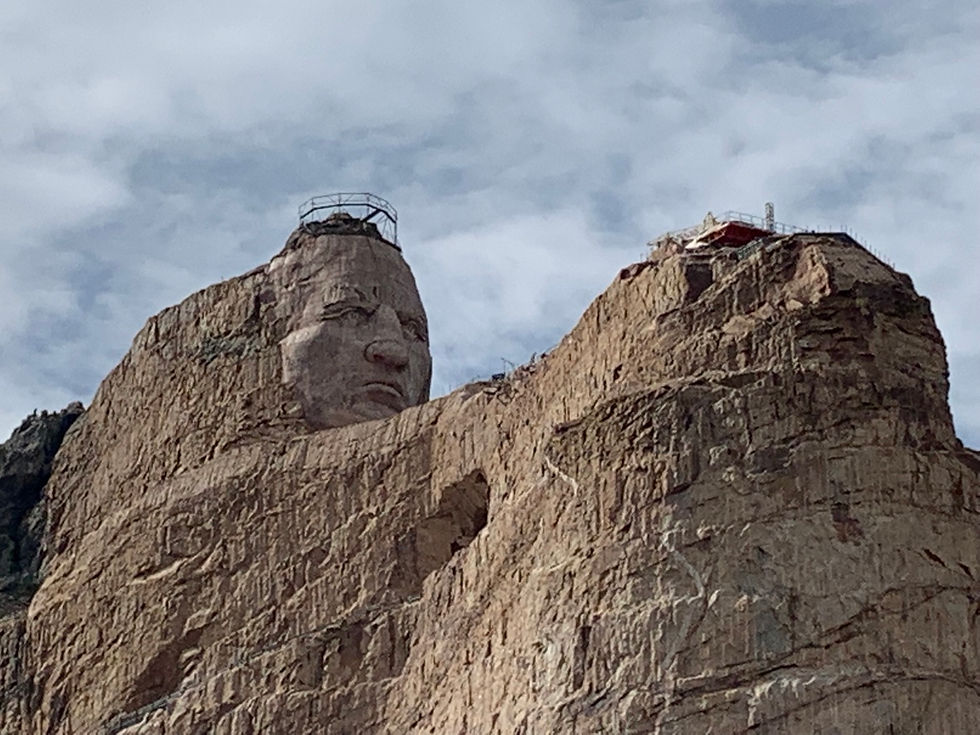

We ungraciously dubbed him 'Chief Big Nose'

A mock-up of the finished statue with the actual face behind

CUSTER STATE PARK
There is so much to explore in this area. The nearby Custer State Park is home to countless buffalo, deer, burros and those friendly little prairie dogs, who pop out of their burrows and endearingly stand on their little hind legs to look back at you. We were proud to have now seen both bison (at Yellowstone) and buffalo (at Custer) - until we were informed that they are exactly the same animal. Derrr. Well, we don’t get many in Key West.


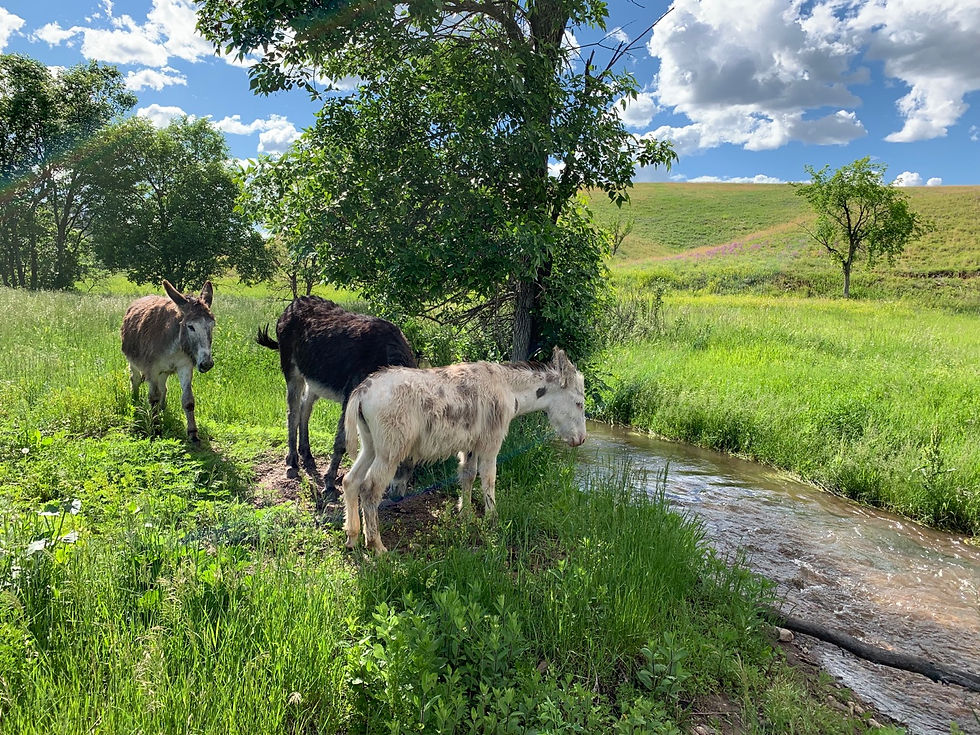
The burros put their hard-working past behind them.
BADLANDS
Fifty miles away are the Badlands, another National Park of gentle hills and rugged escarpments. The rolling foothills covered in late Spring yellow were pure art (below).

LITTLE BIGHORN - CUSTER'S LAST STAND
There is just too much to write about. Like the Battlefield of Little Bighorn where the Indian tribes of the Lakota, Cheyenne and Arapaho defeated the US Army 7th Cavalry on June 25 and 26, 1876, notably killing the illustrious Lieutenant-Colonel George Armstrong Custer along with a further 268 of his troops. Chief Sitting Bull took the credit as the leader but was not actually on the battlefield. That's the way to do it. It was an heroic but Pyrrhic victory as the brave braves were soon to be overcome in a series of fateful future skirmishes with the superior-armed US Troops.

The site of Custer's Last Stand. His gravestone is at the center with the dark inscription.

Lest We Forget The Horses

The battleground
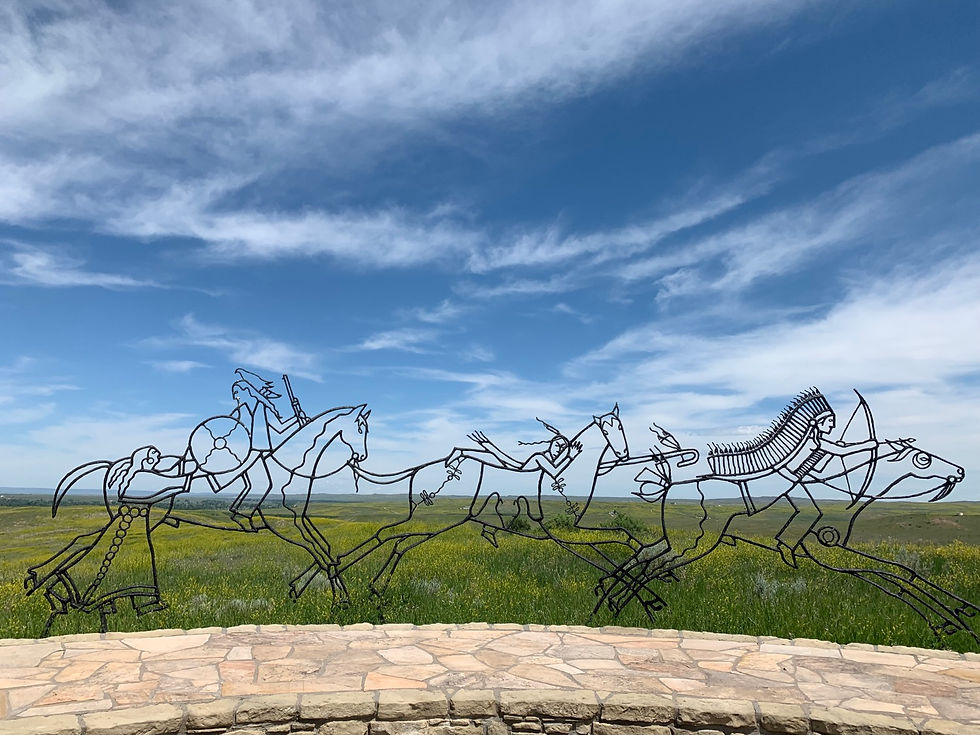
GARNET GHOST TOWN
It seems an injustice not to write more about our journey from Washington State, especially through Montana. This is a spectacularly beautiful state. You feel you have stepped into the set of the Sound Of Music, an Alpine heaven, and the little wooden houses on the hillsides give the whole experience a Tyrollean feel. One place worth seeking out involves a ten mile drive down a dusty unmade road to the oldest ghost town in Montana, not far from the wonderful town of Missoula. Garnet was an old gold-panning community. It was deserted 60 years ago but the houses still survive. There is even an hotel, which chillingly felt haunted and we expected a ghoul to leap out at us at any moment. The day we went, fortuitously, they were having a fund-raiser and a geriatric, loud hoe-down band were playing, enough to drive any evil spirits away.
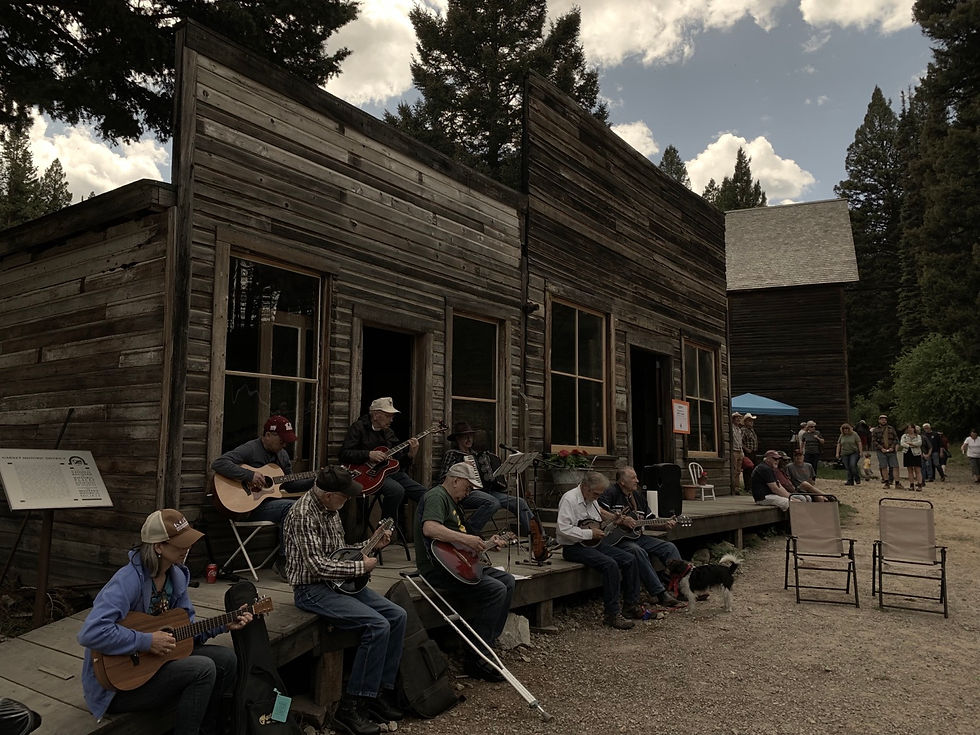

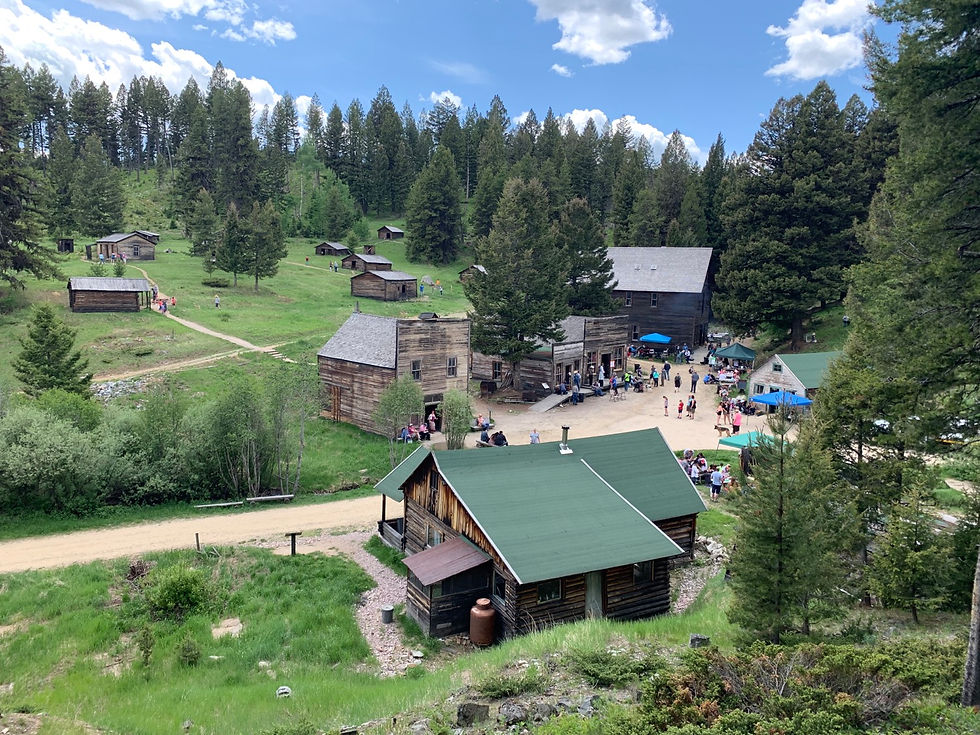
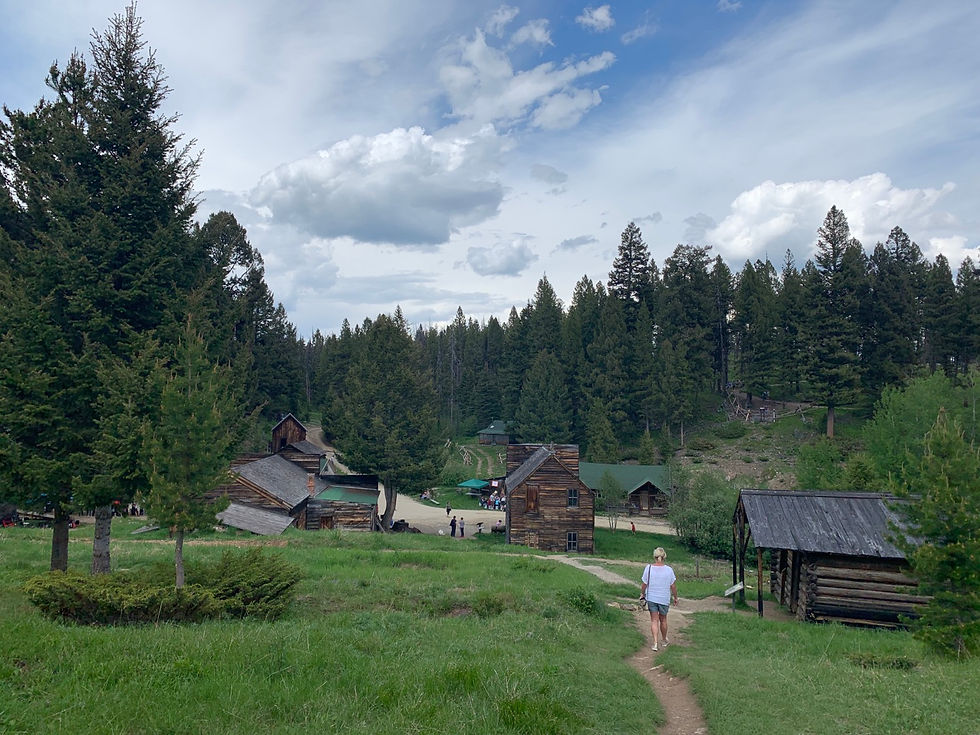

BUFFALO, WYOMING
Our drive of several hundred miles became less eventful as we passed through the disappointingly uninteresting mining towns of Butte, Bozeman and Billings. But all spirits were lifted and restored when we arrived in Buffalo, Wyoming. This is a special place and if you are lucky enough to get there, please don't miss spending an evening at the Occidental Hotel, a step back in time and yet with a lively modern-day energy. Fabulous.
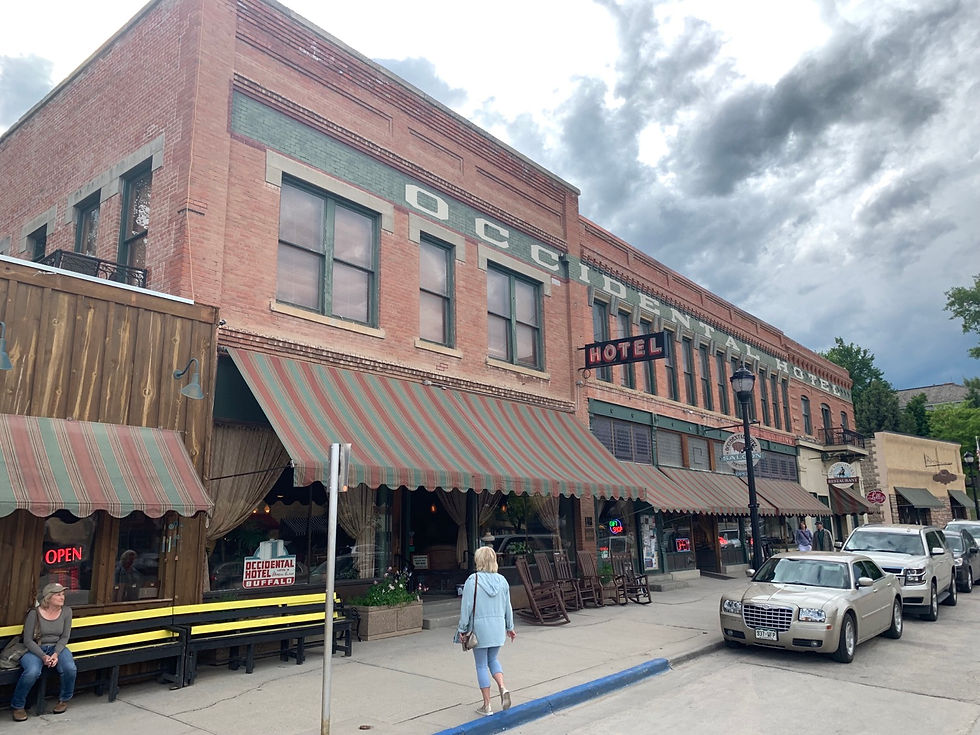
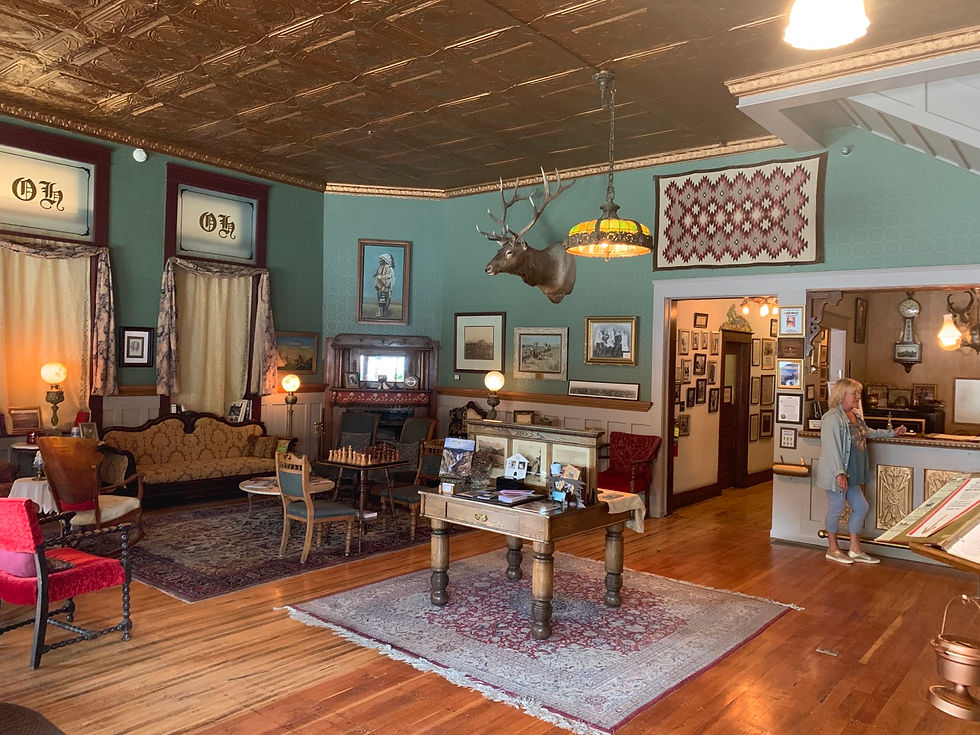
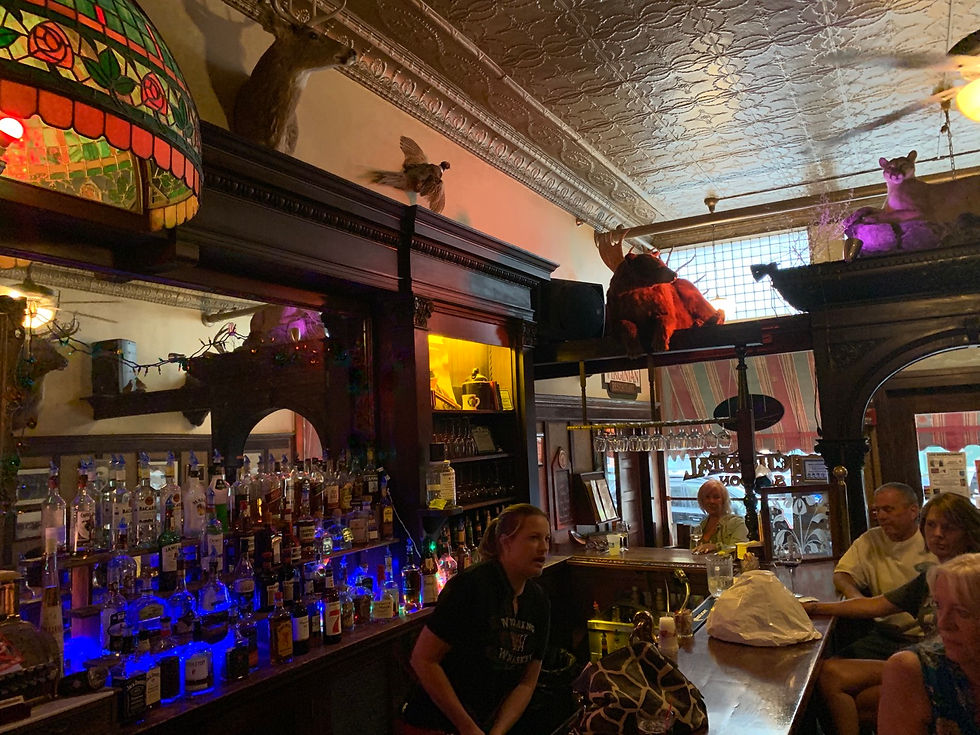

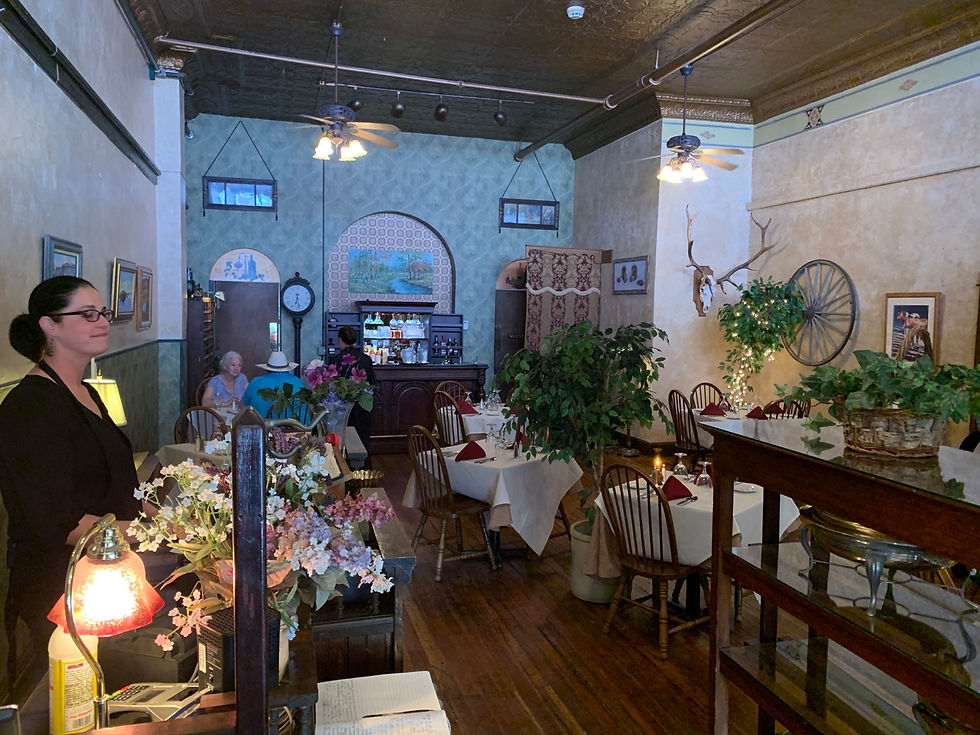

Buffalo, Wyoming
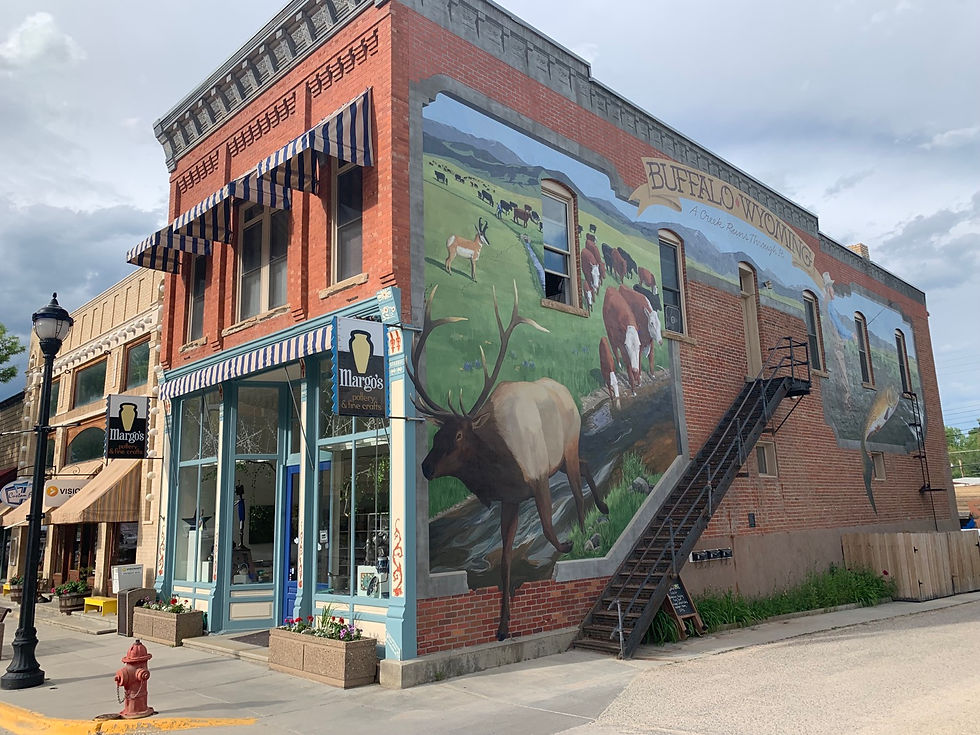
We have extended our stay here at Custer - Deadwood and Keystone are next on our agenda and there is still so much more. South Dakota - we take our cowboy hats off to you. We may even leave them here as we travel east towards the Great Lakes, where they would look, frankly, a bit silly. Boy, we shall miss the West.
AND FINALLY...
While at Mt Rushmore, we entertained ourselves by disingenuously trying to convince two Japanese tourists that the stone heads were, of course, those of Crosby, Stills, Nash and Young. That's why they are called 'Rock Stars' we explained. We don't think we did actually convince them but we did leave them scratching their scalps.
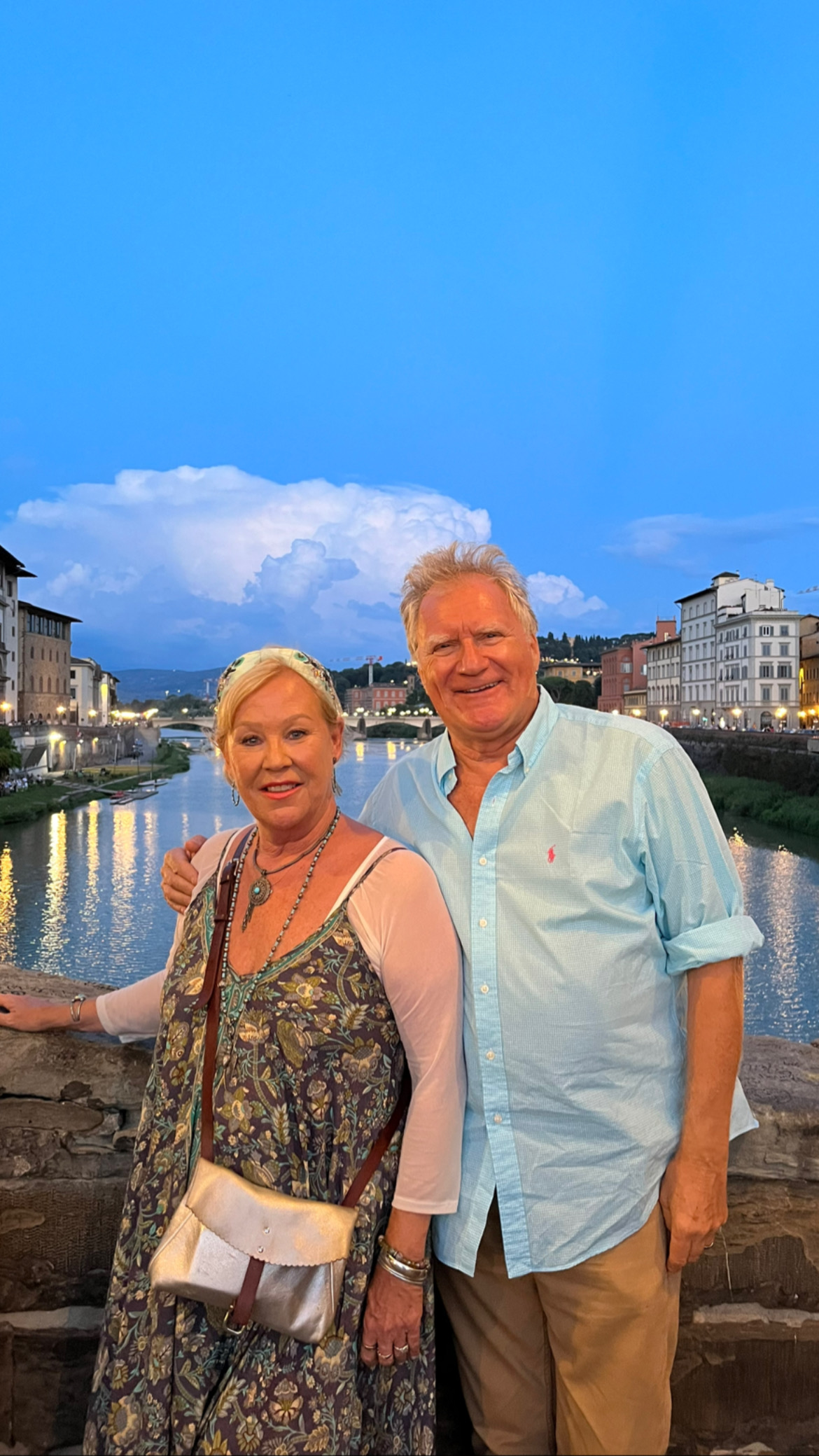



Comments